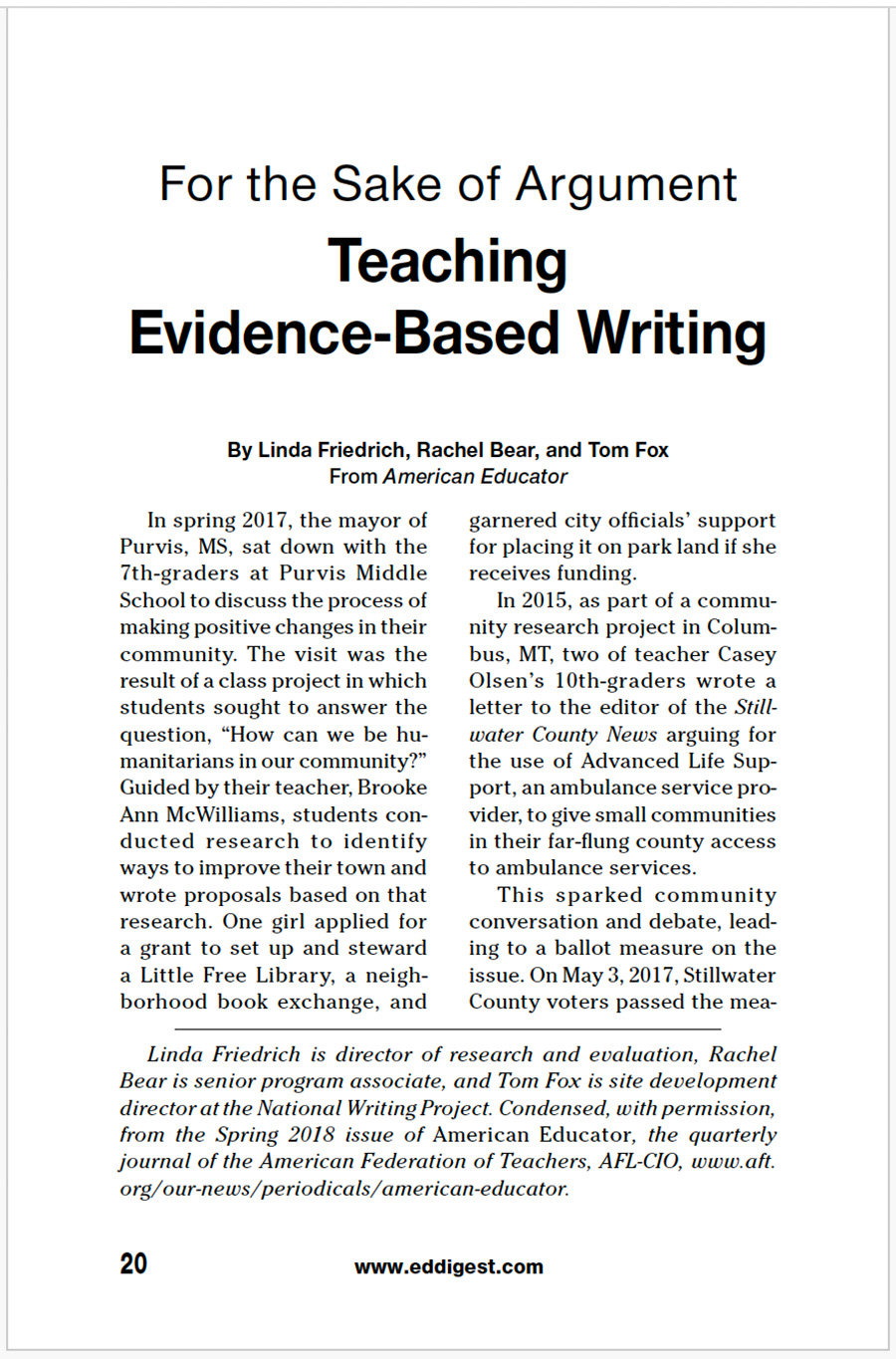Civically-Engaged
Teaching Writing
Writing Assessment
For the Sake of Argument: Teaching Evidence-Based Writing
Summary:
The instructional resources contained in this article are designed to develop specific argument skills and include text sets that represent multiple perspectives on a topic. The resources also emphasize iterative reading and writing practices, the recursive development of claims, organizing and structuring writing, and embedding formative assessment opportunities. The formative assessment tools help teachers assess students' written arguments and provide specific feedback.“To the detriment of education, we live in what author Deborah Tannen calls the ‘argument culture,’ where ‘winning’ is more valued than ‘understanding.’ The NWP’s approach to argument writing starts with having students understand multiple points of view that go beyond pros and cons and are based on multiple pieces of evidence, which ultimately enables students to take responsible civic action.”
Also Recommended
See allBadges and Badging in the Classroom
Sites that are awarding or exploring badges may want to point colleagues to these selections that illustrate how teacher-leaders have used badges in their classroom teaching or writing programs.
Read more
Everyday Advocacy Playbook
Teachers often feel their expertise is ignored in discussions about education policy and curriculum. Everyday Advocacy is an approach that empowers teachers to take small, day-to-day actions to influence the public narrative around schools and teaching. This Playbook provides guidance and examples to help teachers get started with this type of advocacy as part of their regular teaching work.
Read more


